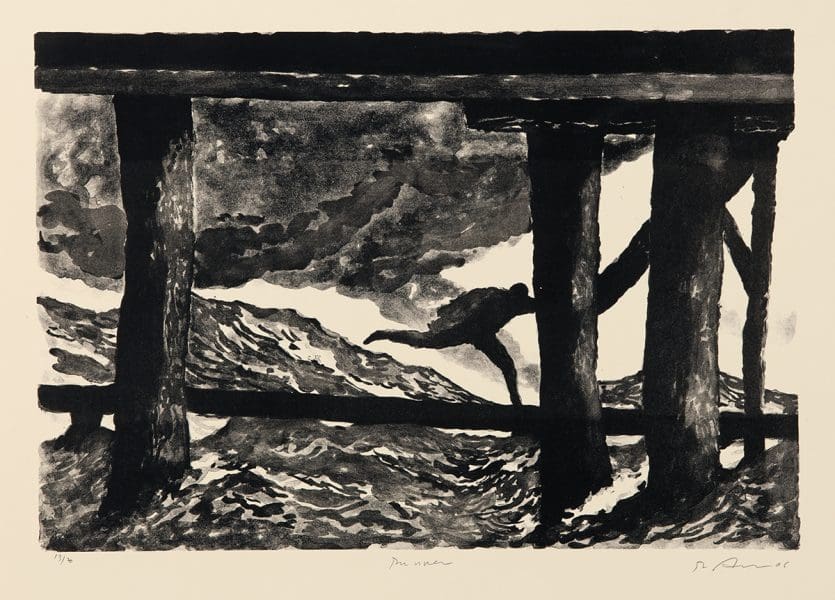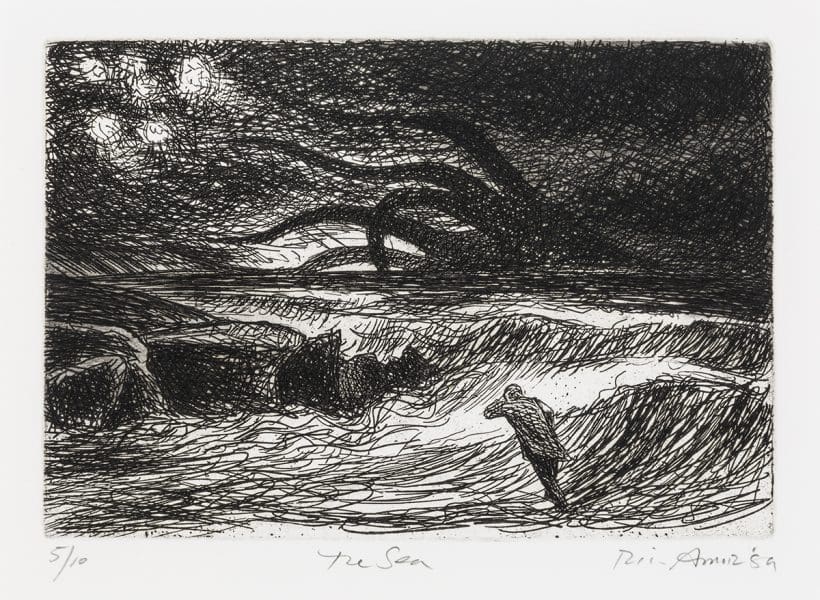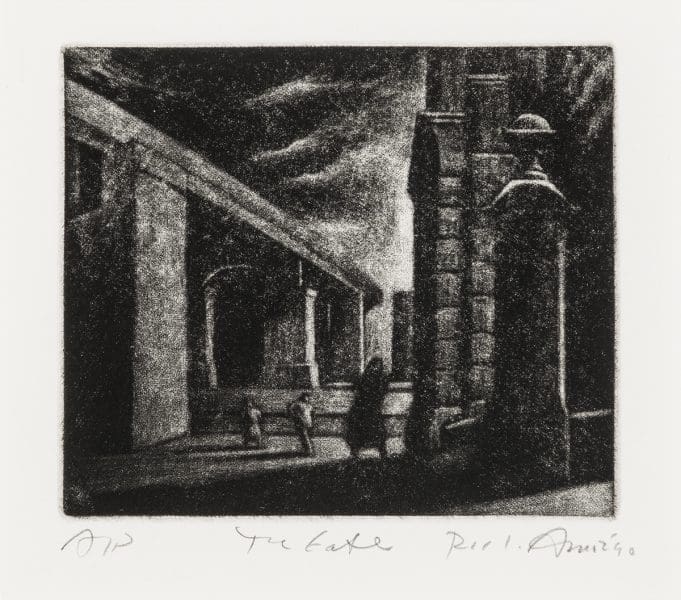
Finding New Spaces Together
‘Vádye Eshgh (The Valley of Love)’ is a collaboration between Second Generation Collective and Abdul-Rahman Abdullah weaving through themes of beauty, diversity and the rebuilding of identity.

Rick AMOR, Australia, born 1948, Martin KING, printer, Australia, born 1957, Australian Print Workshop, print workshop, Runner, 2006, Australian Print Workshop, Melbourne, lithograph on paper, 43.7 x 63.9 cm (image), 56.5 x 75.8 cm (sheet). Barry Walter Rozensweig Bequest Fund 2012, Art Gallery of South Australia, Adelaide. Courtesy the artist and Niagara Galleries, Melbourne.

Rick AMOR, Australia, born 1948, The sea (with giant squid), 1989, Cottles Bridge, Victoria, etching on paper, 15.0 x 22.0 cm (plate). Gift of Rick and Jan Frolich through the Art Gallery of South Australia Contemporary Collectors 2015. Donated through the Australian Government’s Cultural Gifts Program, Art Gallery of South Australia, Adelaide. Courtesy the artist and Niagara Galleries, Melbourne.

Rick AMOR, Australia, born 1948, The gate, 1990, Cottles Bridge, Victoria, mezzotint on paper, 11.5 x 13.5 cm (plate). Gift of Rick and Jan Frolich through the Art Gallery of South Australia Contemporary Collectors 2015. Donated through the Australian Government’s Cultural Gifts Program. Art Gallery of South Australia, Adelaide. Courtesy the artist and Niagara Galleries, Melbourne.

Rick AMOR, Australia, born 1948, The dog, 1991, printed 2002, Victoria; printed by Doug Hails, Baldessin Press, St. Andrews, Victoria, etching, burnishing on paper, 19.5 x 29.5 cm (plate). Gift of Rick and Jan Frolich through the Art Gallery of South Australia Contemporary Collectors 2015. Donated through the Australian Government’s Cultural Gifts Program. Art Gallery of South Australia, Adelaide. Courtesy the artist and Niagara Galleries, Melbourne.
The title Contemporary Romantic links Rick Amor’s work with that of 18th–and–19th century romantic painters, a windswept bunch who liked nothing better than to stand on the edge of a precipice contemplating the abyss and revelling in the sublime (think Caspar David Friedrich’s Wanderer Above the Mists, 1817–18). And much of the work in this survey show, particularly the etching The Sea (with giant squid), 1989, does seem to capture that intoxicating blend of natural beauty and terror.
He is working with memories and dreams. His images, she says, “give expression to a psychological state that many people can relate to”.
Many of Amor’s shadowy images have a cinematic quality. They read like film stills, fragments of a greater drama. Zagala concurs, saying, “I think it is because of the presence of a figure or figures in his compositions which suggest a narrative.” However, she adds, the full story is never clear.
The works in Contemporary Romantic span from the present to 1982, when Amor first started working with his dreams. The exhibition has at its centre 26 of Amor’s prints, recently gifted to the AGSA by Jan and Rick Frolich. Zagala explains that she augmented the show with paintings, additional prints, etching plates and sketchbooks from the artist’s own collection “to show the artist’s working method, and to explore specific, recurring themes in Amor’s art: the sea, the city and the solitary figure”.
In this exhibition, Amor offers us mediated access to his subconsciousness. A glimpse into the mind of another is rare. It’s a private zone where we are, ultimately, all alone.
Contemporary Romantic
Rick Amor
Art Gallery of South Australia
2 December – 30 April